Overview of the Soybean Oil Production Process
The soybean oil production process involves treating soybeans using either the press method or leaching method to yield crude oil, which is subsequently refined to obtain edible, refined oil. Pressed soybean oil possesses natural colors, aromas, and flavors, preserving various nutritious ingredients from the raw material, as compared to leached oil.
In the physical pressing line, careful selection of raw materials is crucial. Soybeans undergo pre-treatment through cleaning, crushing, softening, rolling, and extruding. Subsequently, the cleaned beans are introduced during the pressing process, and oil extraction occurs through a pressing machine. The finished oil is produced using advanced physical refining filtration purification technology.
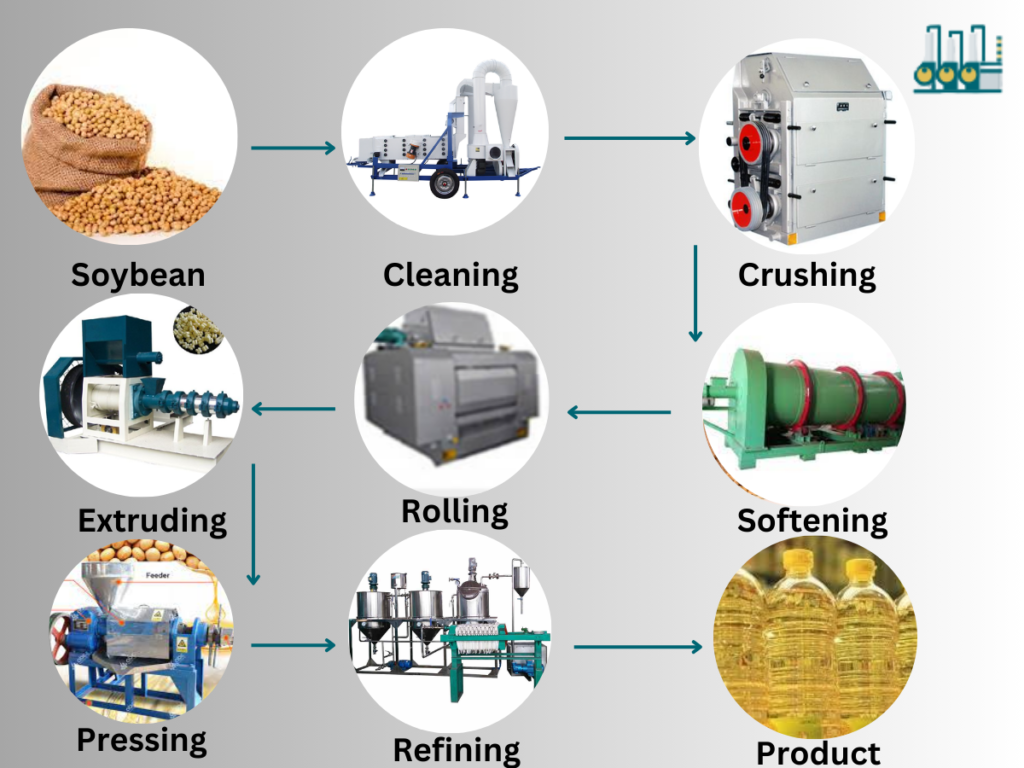
Components of a Fully Executed Soybean Oil Production Line
- Treatment Segment
- Oil Extraction Segment
- Refining Segment
Soybean Oil Production Pre-treatment: Prior to oil extraction, soybeans undergo essential pre-treatment processes within the soybean oil processing industry, encompassing cleaning, crushing, softening, rolling, extruding, and various other procedures. These preparatory steps are crucial in ensuring the quality and efficiency of the overall soybean oil production process.
1.1 Cleaning of Soybeans
The initial step involves the cleaning of soybeans to eliminate impurities. The primary objective of this stage is the removal of various impurities found in soybeans. These impurities mainly include plant-based materials (such as bean stems and pods), metallic impurities, and non-metallic impurities. The thorough cleaning process ensures the quality and purity of the soybeans before proceeding to subsequent stages of processing.
1.1.1 Primary Equipment for Soybean Cleaning
- Magnetic Separator: This equipment employs magnetic force to eliminate metal impurities by leveraging the magnetic differences among various ores or materials. Typically, the metal impurities targeted are nails, small iron wires, and similar contaminants. The removal of these metal impurities is crucial to prevent subsequent machinery wear and tear.

Vibrating Cleaning Screen: To address impurities like soil, leaves, stems, and other ball-shaped contaminants present in the raw material, a vibrating cleaning screen is employed. High-frequency vibration equipment effectively removes these impurities by exploiting differences in particle size between oil and contaminants. Through the relative movement between impure oilseed and the sieve surface, impurities larger or smaller than the oilseed are sifted out through the sieve holes. This type of cleaning sieve is particularly suitable for medium and large-scale production facilities.
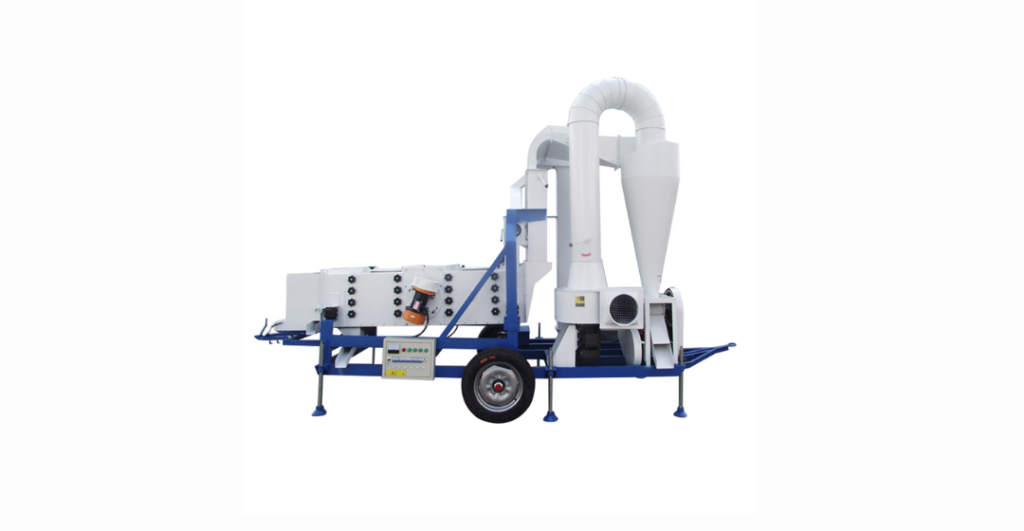
1.2 Soybean Crushing Process
Following the cleaning process, the soybeans proceed to the crushing section, where the primary objective is to crush the soybeans and separate the soybean skins from the bean kernels. This step is crucial in breaking down the soybeans into smaller particles and facilitating the separation of valuable components, such as oil-rich kernels, from the outer soybean skins. The soybean crushing process is a key stage in preparing the raw material for further extraction and refining processes in the soybean oil production line.
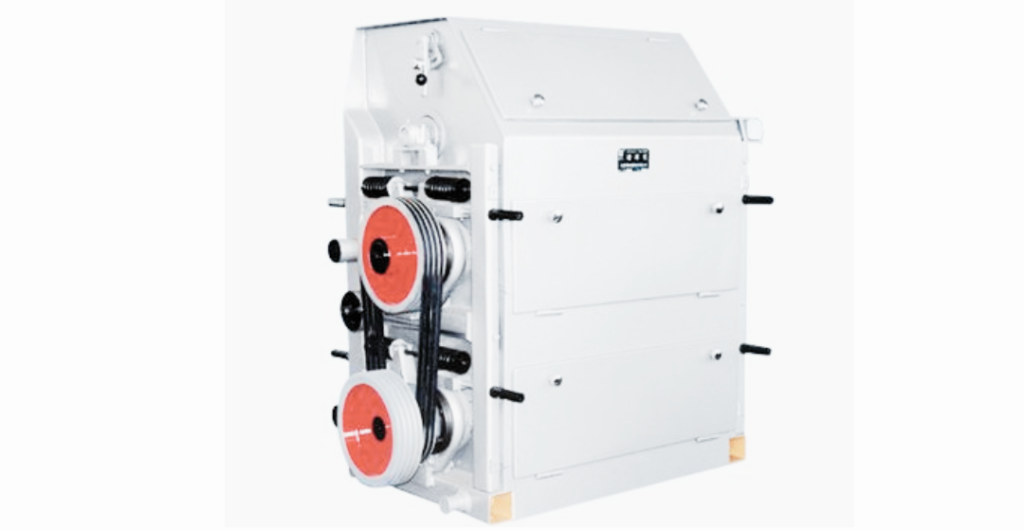
1.2.1 YPSG Series Toothed Roll Crusher in Soybean Crushing
Typically, soybeans need to be broken into 4 to 8 segments, with a desired powdery consistency (less than 10% when the crushed beans pass through a 20-mesh screen). For this purpose, the preferred crusher is a toothed roll crusher that incorporates cutting, impacting, and bending effects. The YPSG series toothed roll crusher is specifically designed for crushing large granular materials like soybeans, aiming to produce high-quality embryos and enhance overall yield. This machine is characterized by low noise, high output, uniform crushing granularity, low power consumption, a compact footprint, simple structure, flexibility, reliability, and convenient maintenance.
1.2.2 Crusher Objectives
The crusher serves several essential purposes in the soybean oil production process:
- Facilitating Compact Rolling: Crushing the oil material to a specific granularity ensures it is conducive to compact rolling during subsequent processing.
- Enhancing Oilseed Softening: The act of crushing increases the surface area of the oilseed, promoting effective temperature and moisture transfer during the softening process. This, in turn, ensures optimal softening effects on the oilseed.
- Preparing for Oil Pressing: By reducing seeds to small granules through crushing, the material becomes well-prepared for the next phase in the oil extraction process, particularly the oil press section.
1.3 Soybean Softening Process
Softening involves adjusting the moisture and temperature of oilseeds to enhance seed elasticity, providing optimal conditions for rolling. This process is especially crucial for seeds with low oil content, low water content, poor physical properties, and a hard texture. Since soybeans exhibit low oil content and limited plasticity, softening is a prerequisite before rolling. Softening conditions are determined by soybean moisture levels. For soybeans with 13%-15% moisture, the recommended softening temperature ranges from 70 to 80°C, and the softening duration typically spans 15 to 30 minutes. A widely utilized softening apparatus for soybeans is the horizontal softening pot, known for its effective softening capabilities.
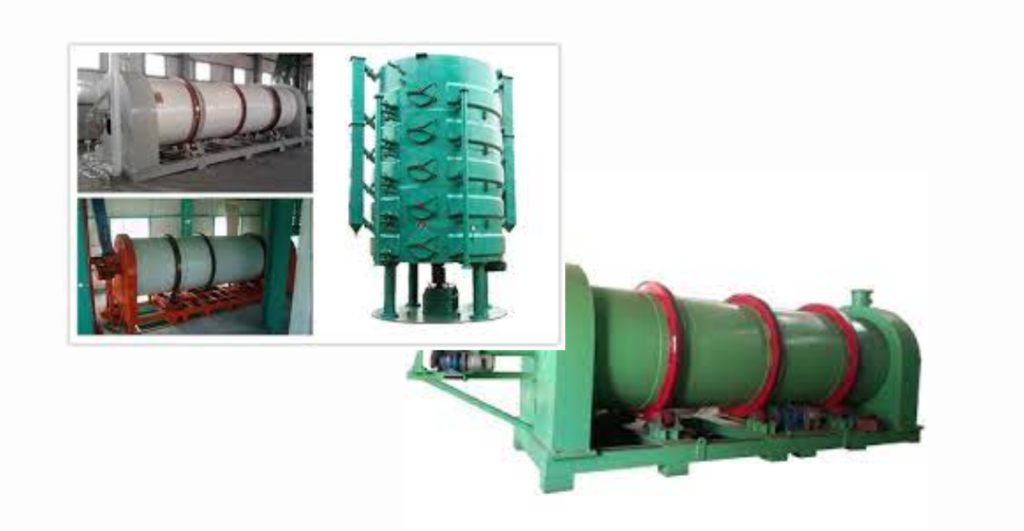
1.3.1 Softening’s Primary Functions
- Providing Plasticity to Soybean Kernels: Softening imparts a specific level of plasticity to soybean kernels, making them more malleable and facilitating the production of thin flakes during the subsequent flaking process.
- Powder Reduction and Prevention of Roller Stickiness: Softening effectively reduces the degree of powderiness and mitigates the occurrence of sticky roller phenomena. This ensures the quality of the resulting flakes.
1.3.2 Operational Principle of Horizontal Softener
The horizontal softener operates based on the following principles:
- Material Entry and Rotation: Material enters the drum through the inlet, and as the drum rotates, the material is continually turned over.
- Simultaneous Heating and Rotation: Equipped with a heating tube, the drum allows steam to pass through, heating the material while it undergoes rotation. The softening time can be controlled by adjusting the drum’s rotation speed, optimizing the softening effect based on the material’s softening requirements
1.3.3 Features of Horizontal Softener
- Uniform Material Turning: The rotation of the horizontal softening pot ensures even material turnover without dead angles, improving softening uniformity. This design minimizes the risk of burnt paste issues associated with dead angles in layer-type softening pots.
- Enhanced Equipment Longevity: The horizontal softener design prevents scraper and heating layer abrasion, resulting in a longer service life, lower failure rates, and reduced maintenance costs.
- Compact Structure and Easy Workshop Arrangement: Due to its unique structure, the horizontal softening pot has a smaller volume than layer-type softeners. This compact design facilitates easier workshop arrangement, occupies less space, and significantly reduces equipment investment.
1.4 Soybean Rolling Process
Soybean rolling involves utilizing mechanical functions to transition oilseeds from a granular to a flake form. This process is a crucial step in preparing the soybeans for subsequent oil extraction processes.
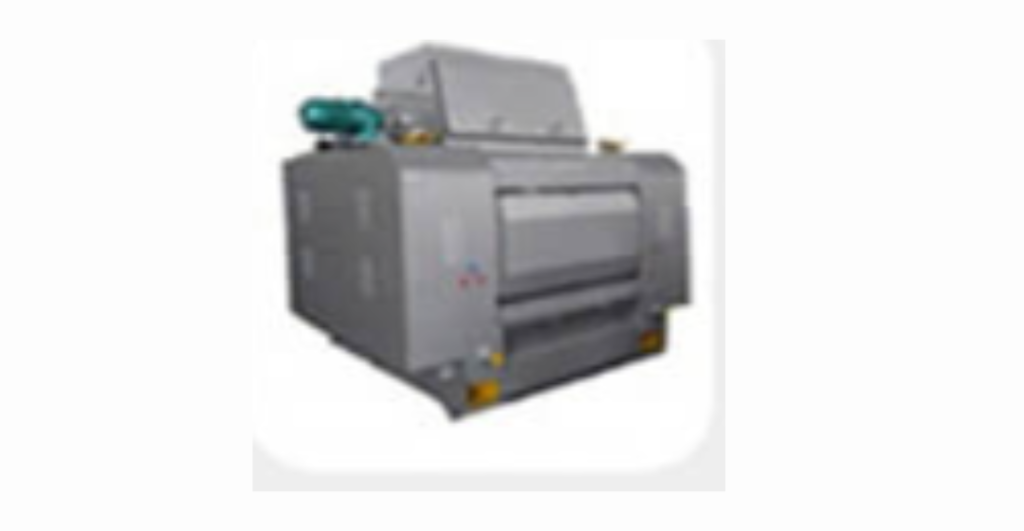
1.4.1 Objectives of Soybean Rolling
Purpose of Soybean Rolling:
The primary aim of soybean rolling is to disrupt the cell structure of the oilseed, augment the surface area of the seed, and reduce the distance for oil to flow out. This process is advantageous for oil extraction. Strict control over the moisture and temperature of materials before rolling is essential to guarantee the quality of the resulting rolled flakes.
1.4.2 Structure of Soybean Rolling Equipment
The structural components of soybean rolling equipment include:
- Feeding Mechanism: Ensures a continuous and uniform flow and distribution of materials.
- Roller (Main Working Part): Responsible for the pivotal rolling action in the soybean rolling process.
- Distance Adjusting Device: Utilizes spring, lever, or hydraulic mechanisms to adjust the distance between rollers, optimizing the rolling process.
- Baffle and Scraper: Contribute to the effective control and shaping of rolled flakes.
- Transmission Device: Facilitates the smooth and coordinated operation of the entire rolling system.
1.5 Soybean Extruding Process
Soybean Extruding
Soybean extruding involves using specialized extrusion equipment to transform crushed and rolled soybeans into porous, expanded granular material. This process, characterized by high temperature and short-duration treatment, is instrumental in current soybean oil production. The prevalent extruding machine is the low-moisture single-screw extruder, utilizing heating, pressing, gluing, and vacuum extrusion. Extrusion temperatures typically range from 110 to 200°C, with a residence time in the extruder lasting 1-3 minutes.
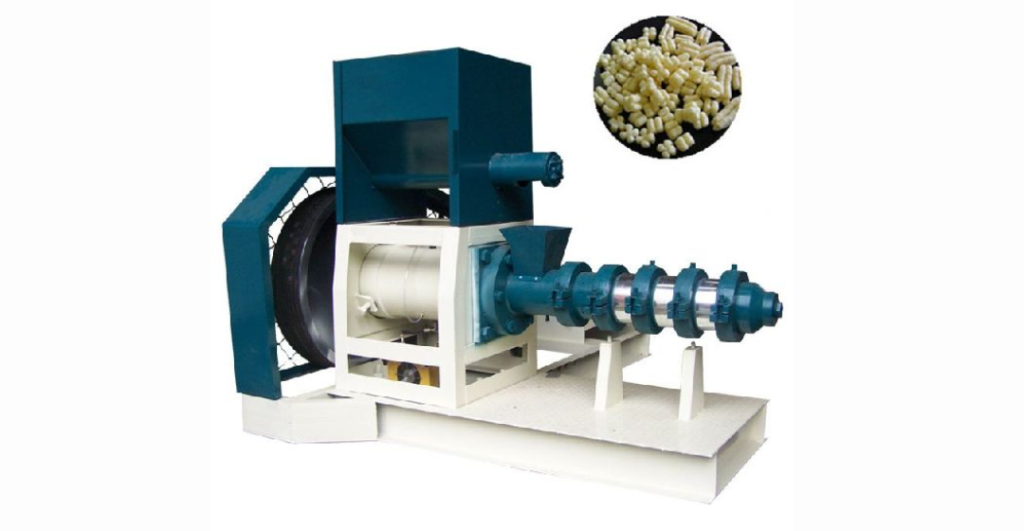
Soybean Oil Applications
- In the Food Industry
Liquid soybean oil serves various purposes in the food industry. Marketed as “vegetable oil” or integrated into processed foods such as margarine, shortening, mayonnaise, and various flavoring oils, refined soybean oil is characterized by its pale yellow color, clarity, transparency, lack of odor, and pleasant taste. It is a versatile cooking oil that does not produce foam or smoke, making it ideal for a range of culinary applications. Besides being a primary cooking and frying oil, it finds a niche as a cold salad oil. Additionally, the byproduct, soybean cakes, is repurposed as animal feed. - In the Chemical Industry
Soybean oil extracts, particularly Soya lecithin, find valuable applications in the chemical sector. Soya lecithin acts as a multifunctional agent, serving as antioxidants, color enhancers, catalysts, emulsifiers, grinding aids, and viscosity modifiers in the production of paints and inks. Its diverse roles include even dispersion of pigments, prevention of sedimentation, stabilization of water-based paints, enhancement of luster in dry films, and improvement of ink fluidity. The addition of phospholipids derived from soybean oil shortens manufacturing kneading time and prevents pigment precipitation, resulting in vibrant colors and enhanced painting performance. The overall effect is a dry, smooth, soft, and bright surface on painted materials.
Sii Daalaco: https://wax-soosaar.com/qalabka-beeraha-iyo-mashiinada-casriga-ah/